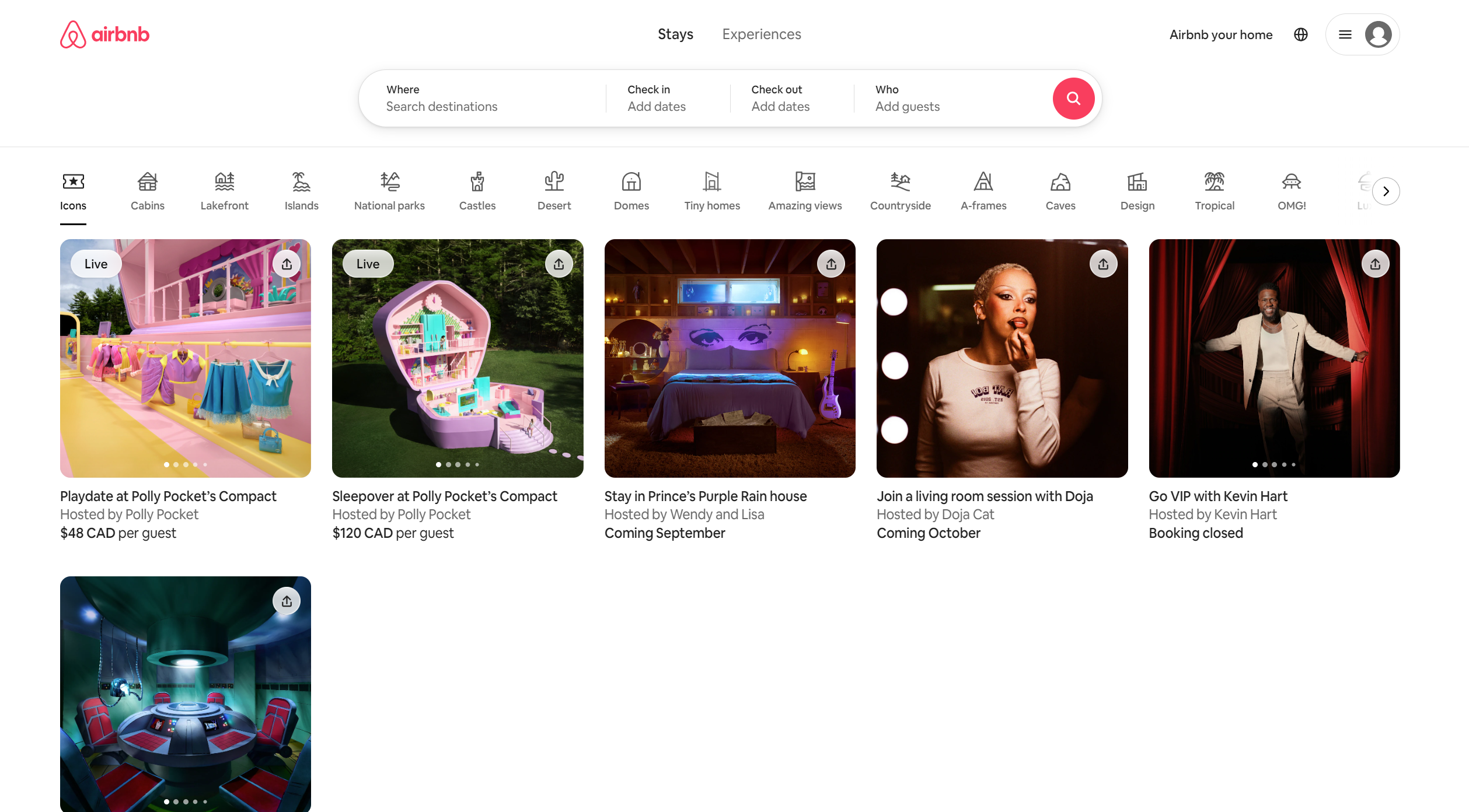In today’s fast-paced digital world, businesses must stay ahead of the curve to remain competitive. One of the most powerful tools at their disposal is social media, a platform that has evolved from a simple means of communication to a vital component of any successful marketing strategy. But with the vast array of platforms and the ever-changing dynamics of online interaction, how can businesses effectively navigate this landscape? The answer lies in a well-defined Social Media Marketing Strategy Framework. This comprehensive approach not only guides businesses in leveraging the power of social media to achieve their marketing goals but also ensures that every action taken is aligned with their broader business objectives. In this blog, we’ll delve into the core components of this framework, explore its importance, and examine how understanding the evolution of social media marketing is key to crafting effective strategies today.
Defining Social Media Marketing Strategy Frameworks
In the rapidly evolving digital landscape, businesses must adopt robust digital marketing strategy framework to stay competitive. One such critical strategy is the Social Media Marketing Strategy Framework, a comprehensive approach that guides businesses in leveraging social media platforms to achieve their marketing goals. But what exactly does this framework entail?
Core Components of a Social Media Marketing Strategy Framework
A Social Media Marketing Strategy Framework is a structured approach that helps businesses navigate the complex world of social media. At its core, it includes the following elements:
- Goal Setting:
- Every successful social media marketing strategy framework begins with clear, measurable goals. Whether it’s increasing brand awareness, driving website traffic, or boosting sales, defining these objectives is the first step in building a solid framework.
- Audience Analysis:
- Understanding the target audience is crucial. This involves identifying the demographics, preferences, and online behavior of potential customers. Tools like social media analytics and customer surveys can provide valuable insights into who the audience is and how best to engage with them.
- Content Strategy:
- Content is the backbone of any social media marketing strategy. A well-defined content strategy outlines what type of content will be created (blogs, videos, infographics), the tone of the messaging, and how often content will be posted. Consistency and relevance are key to keeping the audience engaged.
- Platform Selection:
- Not all social media platforms are created equal. Businesses must choose the right platforms based on where their target audience is most active. For instance, LinkedIn might be more suitable for B2B companies, while Instagram and TikTok could be better for brands targeting younger demographics.
- Performance Metrics:
- To gauge the effectiveness of a social media strategy, it’s essential to track key performance indicators (KPIs). Metrics like engagement rate, click-through rate, and conversion rate provide insights into how well the strategy is working and where adjustments may be needed.
The Importance of a Strategic Approach
Having a structured social media marketing strategy framework not only provides direction but also ensures that every action taken on social media aligns with broader business goals. This strategic approach helps in allocating resources efficiently, targeting the right audience, and ultimately driving better business outcomes.
The Evolution of Social Media Marketing
Social media marketing has undergone a significant transformation since its inception. What began as a novel way for individuals to connect online has evolved into a powerful marketing tool that businesses across the globe now rely on for growth. Understanding this evolution is key to appreciating the strategic frameworks that businesses employ today.
Early Days of Social Media
In the early 2000s, platforms like MySpace and Friendster were among the first to introduce the concept of social networking. These platforms laid the groundwork for what was to come, allowing users to create profiles, connect with friends, and share content. However, it wasn’t until the rise of Facebook in 2004 that businesses began to see the potential of social media as a marketing tool.
The Rise of Major Platforms
The mid to late 2000s saw the emergence of several key platforms that have since become central to social media marketing:
- Facebook:
- With its massive user base, Facebook quickly became a vital platform for businesses looking to reach a wide audience. The introduction of business pages, targeted ads, and advanced analytics transformed Facebook into a cornerstone of social media marketing strategies.
- Twitter:
- Twitter’s unique format, with its emphasis on real-time updates and brevity, provided businesses with a new way to engage with customers. The platform’s use of hashtags allowed for broader reach and engagement, making it a favorite for brands looking to build a quick and direct connection with their audience.
- Instagram and Visual Content:
- Launched in 2010, Instagram’s focus on visual content opened new doors for brands, particularly those in the lifestyle, fashion, and food industries. The platform’s emphasis on aesthetics and its high engagement rates made it an essential part of social media strategies.
- LinkedIn and Professional Networking:
- LinkedIn established itself as the go-to platform for B2B marketing. Its focus on professional networking made it ideal for companies looking to connect with industry leaders, recruit talent, and share thought leadership content.
Current Trends and the Future
Today, social media marketing strategy framework is a sophisticated and multi-faceted discipline. The introduction of new technologies such as AI and machine learning is further shaping the way businesses approach social media. From personalized content to predictive analytics, the future of social media marketing promises even greater integration into the broader digital marketing ecosystem.
Understanding the evolution of social media marketing is crucial for businesses looking to build effective strategies today. By recognizing the milestones that have shaped this field, businesses can better appreciate the importance of strategic frameworks in navigating the ever-changing social media landscape.
Understanding Your Audience: The Foundation of Effective Social Media Marketing Strategy Framework
In the world of social media marketing, understanding your audience is not just important—it’s essential. Without a clear grasp of who your audience is, what they care about, and where they spend their time online, even the most creative campaigns are likely to miss the mark. This section explores the critical role of audience analysis in building a successful social media marketing strategy framework.
Audience Targeting: The Key to Relevant Engagement
Effective social media marketing begins with precise audience targeting. This involves identifying the demographics, interests, and behaviors of your ideal customers. Tools such as social media analytics and customer insights provide a wealth of data that can help businesses understand their audience on a deeper level.
For instance, if your brand targets millennials interested in fitness and wellness, platforms like Instagram and TikTok, known for their visual and dynamic content, would be ideal. On these platforms, you can engage users through visually appealing posts, stories, and influencer collaborations that resonate with their lifestyle and values.
Segmentation: Reaching the Right People with the Right Message
Audience segmentation takes targeting a step further by dividing your broader audience into smaller, more specific groups based on shared characteristics. This allows for more personalized and relevant messaging, which is crucial for increasing engagement and conversion rates.
For example, a fashion retailer might segment its audience into groups such as “young professionals,” “teenagers,” and “fitness enthusiasts.” Each segment would receive tailored content—perhaps career-style tips for young professionals, trendy looks for teenagers, and activewear for fitness enthusiasts. This level of personalization not only captures attention but also builds stronger connections with the audience.
Leveraging Data for Continuous Improvement
Understanding your audience is not a one-time task; it requires continuous monitoring and adjustment. Social media platforms offer robust analytics tools that provide insights into how different segments of your audience interact with your content. By regularly analyzing this data, you can refine your targeting and content strategies, ensuring that your social media efforts remain aligned with your audience’s evolving preferences.
Audience analysis is the cornerstone of any successful social media marketing strategy framework. By accurately targeting and segmenting your audience, you can create more meaningful and engaging content that resonates with your followers, ultimately driving better results for your business.
Crafting a Compelling Content Strategy: The Heart of Social Media Success
Content is the lifeblood of social media marketing. It’s what captures attention, communicates your brand’s message, and drives engagement. But not just any content will do—successful social media marketing requires a well-thought-out content strategy that aligns with your brand’s goals and resonates with your audience. In this section, we’ll explore the key components of an effective content strategy for social media.
Storytelling: The Power of Connecting Emotionally
At the heart of every great content strategy is storytelling. As Joe Pulizzi (2012) notes in his influential work, “The Rise of Storytelling as the New Marketing,” brands that tell compelling stories can create emotional connections with their audience, making their messages more memorable and impactful.
Consider brands like Nike or Coca-Cola, which use storytelling to convey their values and connect with consumers on an emotional level. Nike’s “Just Do It” campaign, for instance, isn’t just about selling shoes; it’s about inspiring people to push their limits and achieve their dreams. This kind of storytelling creates a narrative that audiences can relate to and engage with, fostering a deeper connection with the brand.
Content Diversity: Engaging Different Preferences
A successful content strategy is also diverse, offering a mix of content types to keep the audience engaged. This includes:
- Visual Content: Images and videos are crucial on platforms like Instagram, Pinterest, and TikTok, where visual appeal is key to capturing attention.
- Written Content: Blogs, articles, and captions provide valuable information and context, helping to establish your brand as a thought leader in your industry.
- Interactive Content: Polls, quizzes, and live Q&A sessions encourage direct engagement and interaction, making your audience feel involved and valued.
By diversifying your content, you can cater to different preferences within your audience, ensuring that your social media presence appeals to a wide range of users.
Consistency: Building Trust and Recognition
Consistency in content delivery is another vital aspect of an effective social media content strategy. Regular posting not only keeps your audience engaged but also helps build brand recognition and trust. When your audience knows they can expect regular updates and high-quality content from your brand, they are more likely to stay connected and engaged.
Creating a content calendar is a practical way to maintain consistency. This tool allows you to plan and schedule posts in advance, ensuring a steady stream of content that aligns with your overall marketing goals and key dates.
Crafting a compelling content strategy is essential for social media success. By focusing on storytelling, diversifying your content, and maintaining consistency, you can create a strong social media presence that resonates with your audience, fosters engagement, and drives business growth.
Harnessing the Power of Social Media: Case Studies of Successful Businesses
In today’s digital age, social media has become an indispensable tool for businesses striving to expand their reach, engage with customers, and ultimately, drive growth. While many companies have successfully integrated social media into their marketing strategies, the true impact of these efforts can be best understood through real-world case studies. In this blog article, we’ll explore several case studies that highlight how businesses have leveraged social media marketing to achieve remarkable success.
1. Glossier: Building a Community-Driven Brand
Overview: Glossier, a beauty brand known for its minimalist skincare and makeup products, is a prime example of a company that has effectively used social media to build a strong, community-driven brand. Founded in 2014, Glossier quickly gained a cult following, thanks in large part to its strategic use of social media.
Strategy: Glossier’s social media strategy revolves around fostering a sense of community among its customers. The brand actively engages with its audience on platforms like Instagram, encouraging users to share their own beauty routines and experiences with Glossier products. User-generated content (UGC) is a cornerstone of their strategy, with the brand frequently reposting customer photos and stories on its official channels.
Results: This approach has helped Glossier build a loyal customer base and establish itself as a trusted authority in the beauty industry. The brand’s Instagram account alone boasts over 2.7 million followers, and its community-driven approach has translated into impressive sales growth. Glossier’s emphasis on social media has also enabled it to expand globally, reaching customers in over 15 countries.
Key Takeaway: Glossier’s success underscores the importance of community engagement in social media marketing. By creating a platform where customers feel valued and heard, businesses can build a loyal following and foster a strong sense of brand identity.
2. Airbnb: Turning Travelers into Ambassadors
Overview: Airbnb, the online marketplace for lodging and travel experiences, has used social media to transform its customers into brand ambassadors. Since its founding in 2008, Airbnb has grown into a global giant, with millions of listings in over 220 countries and regions. A significant part of this growth can be attributed to its innovative social media strategies.
Strategy: Airbnb’s social media strategy focuses on storytelling and user-generated content. The brand encourages its users—both hosts and guests—to share their unique travel experiences on social media using the hashtag #Airbnb. These stories, often accompanied by stunning visuals, are then featured on Airbnb’s official social media channels, including Instagram and Facebook.
To further amplify its reach, Airbnb has also partnered with influencers and celebrities who share their Airbnb experiences with their own large audiences. This not only enhances the brand’s visibility but also lends credibility, as these influencers often serve as trusted voices within their communities.
Results: Airbnb’s social media strategy has played a crucial role in its rapid growth. The #Airbnb hashtag has been used over 5 million times on Instagram, and the brand’s social media channels collectively reach millions of users worldwide. This user-driven content has not only increased brand awareness but also helped Airbnb build trust and authenticity—a key factor in the decision-making process for travelers.
Key Takeaway: Airbnb’s success highlights the power of storytelling and user-generated content in social media marketing. By encouraging customers to share their experiences, businesses can create a wealth of authentic content that resonates with potential customers and enhances the brand’s credibility.

3. Wendy’s: Mastering the Art of Engagement
Overview: Wendy’s, the fast-food chain known for its square hamburgers and Frosty desserts, has gained fame for its bold and witty social media presence. Unlike many brands that stick to safe, corporate messaging, Wendy’s has embraced a more playful and edgy approach, particularly on Twitter.
Strategy: Wendy’s social media strategy is centered on real-time engagement and humor. The brand frequently interacts with customers on Twitter, responding to their comments with clever and often humorous replies. Wendy’s is also known for its playful “roasting” of competitors, which has generated significant buzz and engagement.
One of the brand’s most successful social media campaigns was the #NuggsForCarter campaign in 2017. When a Twitter user named Carter Wilkerson asked Wendy’s how many retweets he needed to get free chicken nuggets for a year, Wendy’s responded with “18 million.” The exchange went viral, and although Carter didn’t reach 18 million retweets, the campaign garnered over 3.5 million retweets, making it the most retweeted tweet at the time.
Results: Wendy’s unconventional approach to social media has paid off handsomely. The brand’s Twitter account has grown to over 3.9 million followers, and its unique voice has helped it stand out in the crowded fast-food industry. The increased engagement on social media has also translated into stronger brand loyalty and positive customer sentiment.
Key Takeaway: Wendy’s demonstrates that taking risks and embracing a distinct brand voice on social media can lead to significant rewards. By engaging with customers in a fun and memorable way, businesses can enhance their online presence and build a loyal following.

These case studies illustrate the diverse ways in which businesses can harness the power of social media to achieve their goals. Whether it’s building a community, encouraging user-generated content, or mastering engagement, the key to success lies in understanding your audience and creating a strategy that resonates with them. As these examples show, when done right, social media marketing can be a game-changer for businesses of all sizes.
By studying the successes of brands like Glossier, Airbnb, and Wendy’s, businesses can draw valuable lessons that can be applied to their own social media strategies, paving the way for growth and success in the digital age.
Conclusion
As the digital landscape continues to evolve, the importance of a robust Social Media Marketing Strategy Framework cannot be overstated. By clearly defining goals, understanding and targeting the right audience, crafting compelling content, and choosing the right platforms, businesses can build a powerful social media presence that drives engagement and growth. Moreover, staying informed about the evolution of social media marketing—recognizing past milestones and anticipating future trends—enables businesses to remain agile and adaptable in an ever-changing environment. Whether you’re a startup looking to establish your brand or an established company aiming to expand your reach, a strategic approach to social media marketing is essential. By implementing the insights and strategies discussed in this blog, businesses can not only survive but thrive in the digital age.





